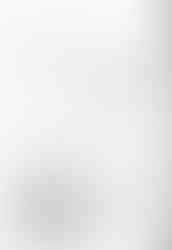Illustration 1, Exercise 3.5 - Giving Instructions
- Dan Woodward

- Mar 14, 2019
- 3 min read
Updated: Sep 22, 2019
I was very excited to get started on this exercise, but I wasn't immediately sure which topic out of "Making a cup of tea", "Getting to my house", and "Playing a tune on an instrument" I wanted to choose. I was torn between the procedural aspect of making tea, and the directional aspect of a map.
So I decided to do some research into both aspects, and then decide what appealed to me most:
The maps aspect appealed, as my wife and I commissioned an illustrated map to our wedding in 2011:

However, I also have an ambition to bring more illustration into my professional work as a coach and management consultant. A good portion of my work is helping people to learn new ways of working together, and I really wanted to practice how to convey information to people in interesting and informative ways. So I opted for tea!
I started by using my exercise sketchbook to note the steps needed to make tea. I referenced instructions on Whittards and T2 to see commonalities and any differences. I discovered that there was much more nuance and variation than I had first thought. I decided I needed to narrow my context, so I decided to focus on hot tea using leaves, rather than cold or fruit tinctures.

My next step was to create thumbnails for varying ways to display the approach. At this stage I wasn't exactly sure on the rendering style that I wanted to use, so I tried to explore layouts and relationships that would give me options and freedom when it came to rendering. After my sixth thumbnail there were aspects from two of the thumbnails I liked, so I tried to pull them together into a seventh option. It seemed to work, so I decided to move onto the roughs stage using this idea.
In the first rough, I went into a bit more detail, to not only explore the composition, but test out the iconography and metaphor for some of the elements. I was generally happy with the result, but the top section didn't seem to flow well, and I wasn't happy with its hierarchy. So I did another rough, playing with the flow of the elements and information. I didn't need to render this rough as much in places, and I focused instead on conveying the essence of the information.
When it then came to try the render, I thought about how best to go about it. I wanted to avoid a digital render, so thought about some watercolour and ink. Then I thought about using actual tea as a watercolour.

Remembering my linocut print, I decided I should try and do a test on the same kind of paper that I was going to use for the final piece. This would also allow me to see what accent colours might work with the tea stain.
The first four layers showed a progression, but the tea was too diluted, and it inhibited my ability to establish contrast. So I boiled down the tea to a much more concentrated version, and tried that. It gave me a consistency that I knew I could work with, and dilute for lighter colours, rather than rely on inconsistent glazes to darken the colour.
I started by taping down the paper, and applying masking fluid to areas that I needed to be white, or to be painted over later with accent colours. I then worked on layering the tea to establish the tea strengths in the cup and also to give the impression of steam. I wanted to use the steam to help a reader's view down through the steps. The last step was to remove the masking fluid and add in the accent colours. I used ink fineliners to provide outline and structure, and to add the text. I left the title to last, which you can see in the final illustration below:

I scanned in the finished piece, and was pleased with the colours and contrast, it didn't really need any adjustment. I am also pleased that I didn't need to use much text to explain the process. I ran the illustration by family and co-workers to sanity check the instructions and everyone seemed to understand it well. There are a few things I would tweak, the title's position seems a little off, and the Black/Rooibos text probably needs a thicker outline to work at distance, but that is easily fixed.
This exercise ended up being as fun as I hoped it would be, and I am proud of my efforts. Mostly, it really feel like my voice.
Follow-Up
One of the key things my tutor toted in concurrence with my own observations - especially the need for greater contrast in the "Black/Rooibos" text. I fixed this by changing the text to be white, and slightly increasing the thickness of the black outline. It's had the intended effect of making the poster more legible at distance.




















Comments